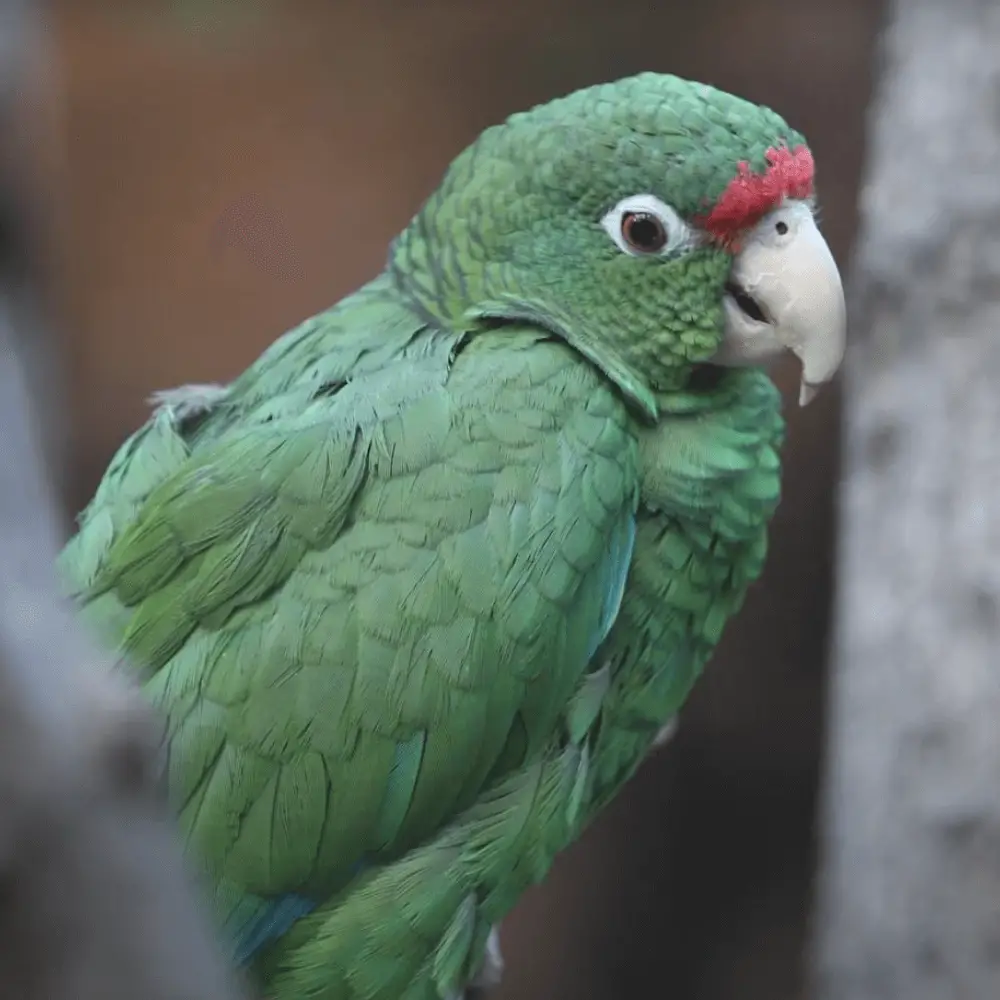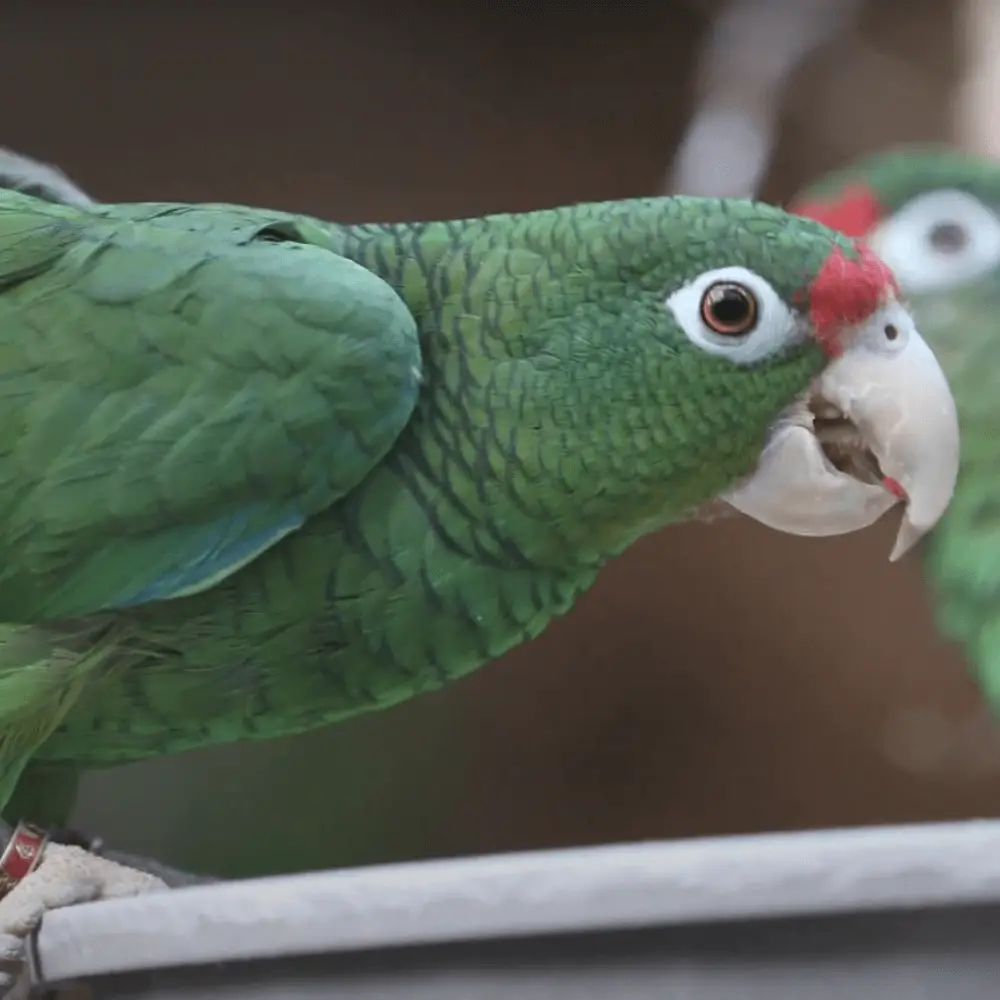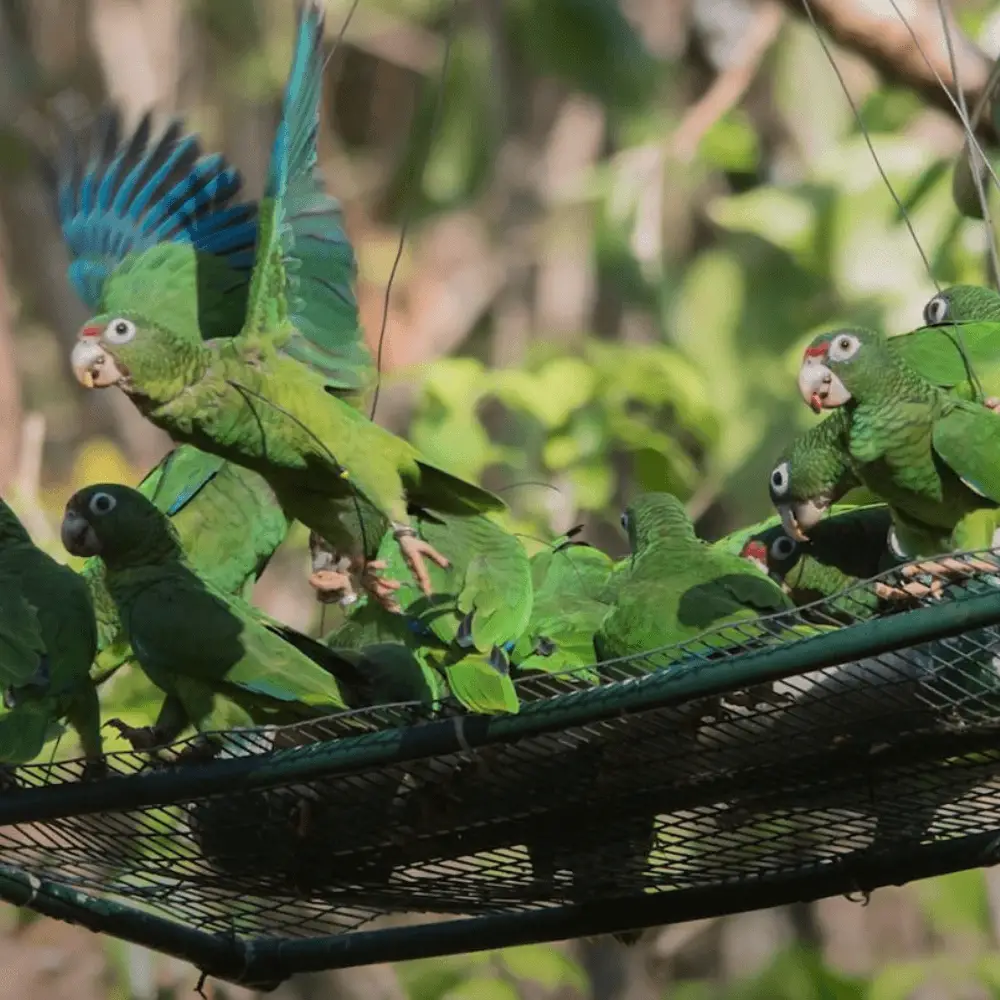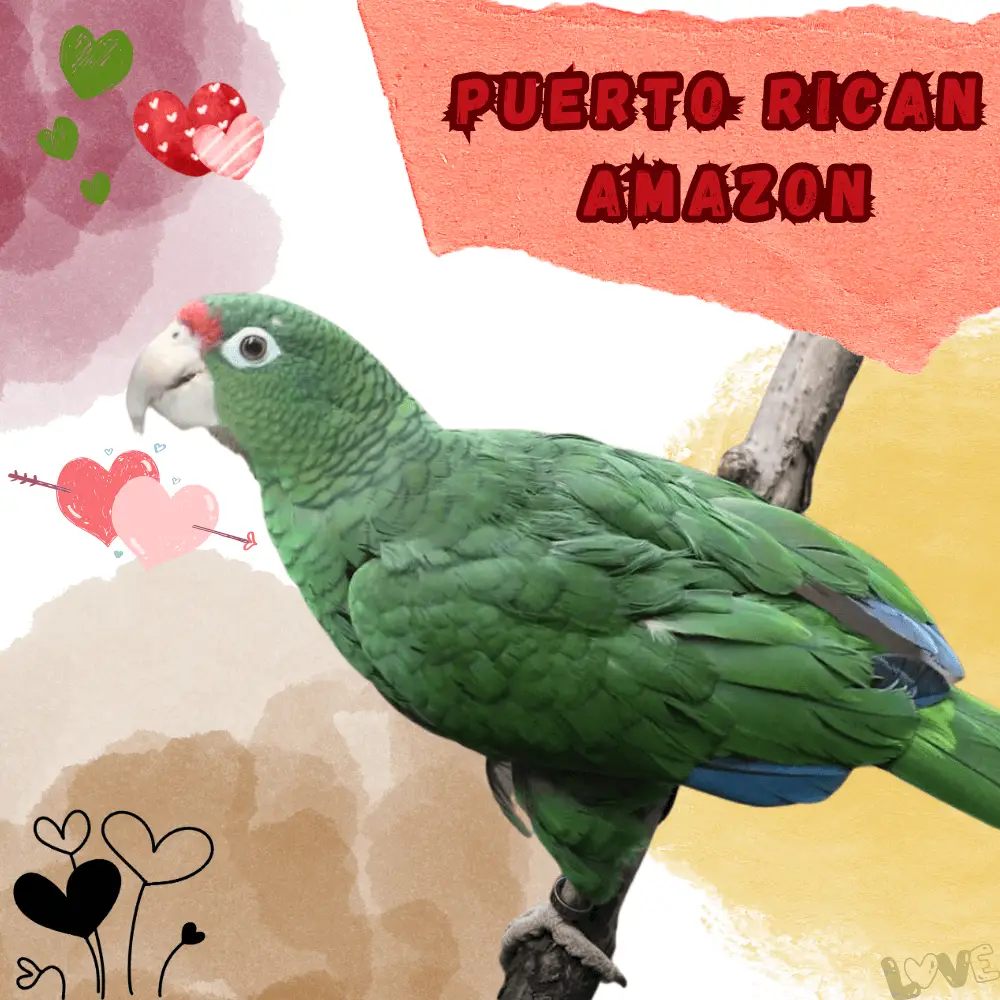Puerto Rican amazon: 29cm. length and 320 grams. also known as the Puerto Rican parrot or iguaca (Amazona vittata) has the lores and the front, red; green grass lined with feathers with black color, and the rest of the head and neck, giving a strong crumbling.
Mantle feathers green grass; back Yes collars with less pronounced dark margins; Grupa Yes upper tail-coverts, paler, more green-yellow. The great outer coverts are blue; the rest of the coverts color green grass.
Primary Yes outer networks of the external secondary, blue; the internal networks of the external side Yes secondary internal, Vert. From below, the wings are green and blue-green flight feathers.
Spotted yellowish-green underparts; throat and breast feathers with dark edges. Above, the tail is green; below is more yellowish, yellow with its tip; as well with blue outer nets to outer feathers. Pale horn bill; brown iris; pale gray legs.
Both sexes are alike. Young adult-like, but with a pale gray-yellow bill on the base of the upper jaw.
- Order: Psittaciformes
- Family: Psittacidae
- Genus: Amazona
- Scientific name : Amazona vittata
- Quote : ( Boddaert, 1783)
- Protonimo : psittacus vittatus
-
Puerto Rico
-
30 to 40 years.
-
29cm.
Subspecies

Amazona vittata gracilipes
( Ridgway, 1915) – Extinct. Small and with smaller and more slender feet than the nominate species.
( Ridgway, 1915) – Extinct. Culebra Island ( Puerto Rico ).
Amazona vittata vittata
( Boddaert , 1783) – Nominal.
Habitat
The Puerto Rican Amazon formerly frequented the main types of natural vegetation (various forest habitats, ranging from mangroves to montane forests) in Puerto Rico, with the possible exception of dry forests in the southern coastal regions.
Its current small remnant population inhabits the montane rainforest at 200-600 m. In the lower mountains slopes dominated by Tabonuco trees of the species Dacryodes excelsa, in the swamp forests at higher altitudes, characterized by the abundance of Cyrilla racemiflora and the Sierra palm areas Prestoea montana.
Seen in pairs or (especially when feeding) in small flocks, having formerly formed flocks of several hundred.
Distribution and status

The Puerto Rican Parrot It is endemic to Puerto Rico and the ancient neighboring Mona Yes Serpent Islands; there are reports of Vieques Oui St. Thomas parrots, probably belonging to this species. Formerly found in all Puerto Rico forest regions (with the possible exception of the dry southern coastal strip), but from around 1960 their habitat was restricted to the Luquillo Forest in the east.
drastic population decline and classify the mid-nineteenth century. The pre-contact population was probably in the hundreds of thousands of birds. There was a dramatic decline, which reduced its population to around 2,000 specimens in 1937 and in 1950 they were only 200: a search in 1968 only revealed the existence of 24 birds.
The conservation program, initiated in 1968, includes captive breeding, provision of nests, detailed investigation of reproductive ecology and biology, and control of predators and competitors.
In 1992 the wild population was 39-40 birds 58 in captivity (all in Puerto Rico ). Its population has declined, close to extinction, mainly by loss of habitat (in 1912 only 1% of the virgin forests of the island remained), the hunting and capture as pets.
Ongoing threats to the small remaining population include hurricane impact (wild population halved 21-23 after Hurricane Hugo bird strike in 1989), competition with introduced bees Apis mellifera through tree cavities, loss of broods caused by the parasitic flies Philornis pici, losses caused by predators and competition for nesting cavities with soursop thrasher ( Margarops fuscatus ).
The Puerto Rican Amazon, inhabitants of Culebra Island (dubiously separated as the subspecies Amazona vittata gracilipes ), became extinct in the early 20th century, likely due to persecution due to crop damage and hurricane impacts. extant population protected in the El Yunque National Forest.
Reproduction

The Puerto Rican Amazona nests in wide, deep tree cavities; in the past, they put their nests in the calcareous hollows, in the west of the island. The Amazona de Luquillo usually nests in the species Cyrilla racemiflora.
They defend their territory around the nest vigorously while playing. The egg-laying, between February and April, possibly coincides with the availability of fruit. Clutch 2-4 eggs (usually three).
Since 2001, all known nesting in the wild has occurred in artificial cavities ( White et al., 2006 ).
Food
The diet of the Puerto Rican amazon It consists of a variety of fruits, seeds, flowers Yes leaves, among which include fruits of Prestoea Montana Yes Dacryodes excelsa, flowers of Piptocarpha tetrantha Yes bracts of marcgravia sintenisii.
How many Puerto Rican Amazons are left?

• Current IUCN Red List Category: Critically Endangered.
• Demographic trend: Increasing
• Population size: 33-47.
The rationale for Red List Category
Once you’ve done a bird count, there are only 13 Puerto Rican Parrots in the wild, leaving the species on the brink of extinction. Conservation action The population has increased since 1975, but it remains Critically Endangered as the number of mature individuals is still tiny. If released birds breed successfully in the wild and numbers remain stable or increase, the species may warrant a change in status in the future.
Population justification
As of 2011, the population was between 50-70 individuals divided into two areas, approximately equivalent to 33-47 mature individuals. In 2013, its population had only increased by 80-100 individuals in the wild (64-84 in Downstream Yes 15-20 in The Anvil ).
However, released birds are not counted as mature individuals until they have successfully reproduced in the wild ( IUCN 2011 ), and the entire population of Downstream is derived from released birds. The total number of mature individuals is uncertain but may be less than 50, therefore, the 2011 mature estimate is maintained in this figure.
Justification of the trend
An estimated 1-19% increase has occurred in the last ten years, based on regular counts of the total wild population.
According to sources, A copy of the Puerto Rican Amazon lived 10.1 years in captivity. However, given the longevity of similar species, probable maximum longevity is underestimated in this species.
In fact, it has been reported that they can live up to 27.2 years in captivity, which is plausible but has not been confirmed. Since the closely related Cuban amazon (Amazona leucocephala) can live to be 50 years old ( Wilson, et the., 1995 ), an age close to the latter figure may be possible for the Puerto Rican amazon.
Each captive specimen of this species, which is capable of reproducing, should be placed in a well-managed captive breeding program and not sold as a pet, to ensure its long-term survival.
SOURCE: Lincoln Park Zoo
Related article:
- Red-crowned amazon
- Blue-cheeked Amazon
- Diademed Amazon
- Blue fronted amazon
- Amazon parrot for adoption
- Vinaceous-breasted amazon
- White-fronted amazon
- Lilac-crowned amazon
- Red-lore amazon
- Yellow-crowned amazon
- Double yellow headed amazon
- Green-cheeked Parrot
- Yellow-naped Amazon
- Hispaniolan Amazon
- Red-necked amazon


